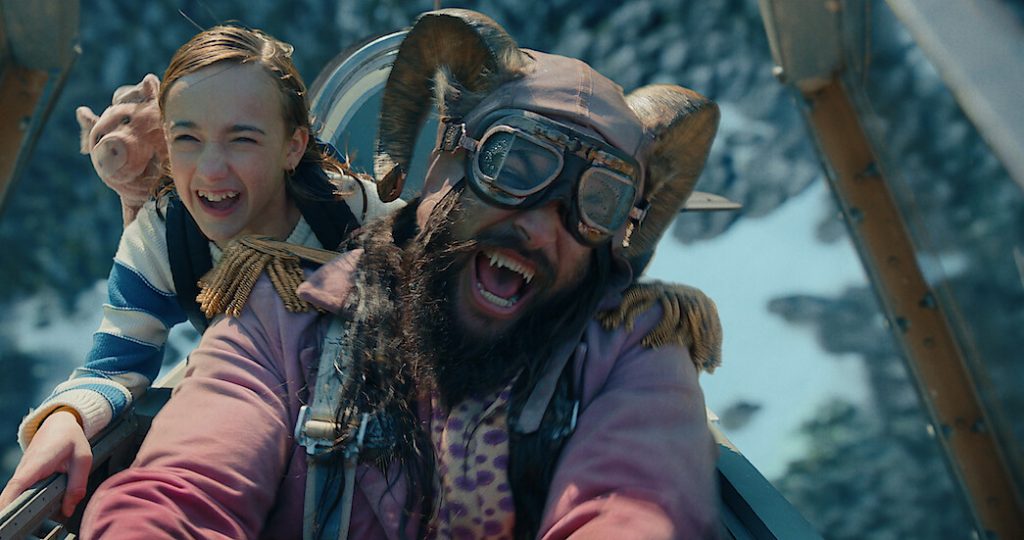In Netflix’s disastrous “Slumberland,” an attempt to construct a vast fantasy adventure from the bones of the early 20th-century newspaper comic strip, a movie about dreams becomes the stuff of nightmares. This wants to be a spectacle from “The Hunger Games” by director Francis Lawrence features a lot of special effects but is most known for serving as Jason Momoa’s vehicle.
The story opens with a standard premise from kid’s movies: Nemo, a young girl, is played by Marlow Barkley in a gender-reversal from the comic, and she lives with her loving father in a lighthouse isolated from the outside world (Kyle Chandler). She is taken to live with her stuffy uncle (Chris O’Dowd) in the big city when her father goes missing at sea, where she finds solace in her dreams.
The realm of dreams is said to be “a place with no consequence,” but as it is produced in a film with no obvious creative direction, it ends up being more mysterious than enchanting. Momoa’s Flip, who lives in the dream realm and, with his horns and hat, resembles an unholy cross of the Mad Hatter, the Ghost of Christmas Present, and a refugee from the island of Dr. Moreau, is an alternately hilarious and sentimental embodiment of the former drive.
In search of a priceless item, Nemo and Flip go on a series of adventures in the hope that she will someway be able to visit her father by traveling through other people’s dreams. They come into conflict with the Bureau of Subconscious Activities along the way, a bizarre bureaucracy that views Flip as an outlaw. The general conceit of “Slumberland” is similar to the classic movie “Time Bandits,” although Netflix has already staked a lot on dreams with “The Sandman.” However, any comparison mainly just highlights how difficult it is to pull off that balance of whimsy and irreverence, and how glaringly “Slumberland” fails to do so.
First and foremost, it’s unclear who “Slumberland” is aimed at, outside Momoa aficionados and a younger audience who may be sufficiently jaded by videogames to be mesmerized by the imaginative production design and unconcerned by the thinness of the plot.
Streaming providers are undoubtedly mesmerized by the star power’s marketing potential, and Momoa, who last year starred with another young girl in the drab “Sweet Girl” as well as the earlier series “Frontier,” as always delivers a potent dose of it. However, given the bizarre surroundings of “Slumberland,” which, as amusement park names go, doesn’t even qualify as a good place to visit, those qualities seem wasted.
